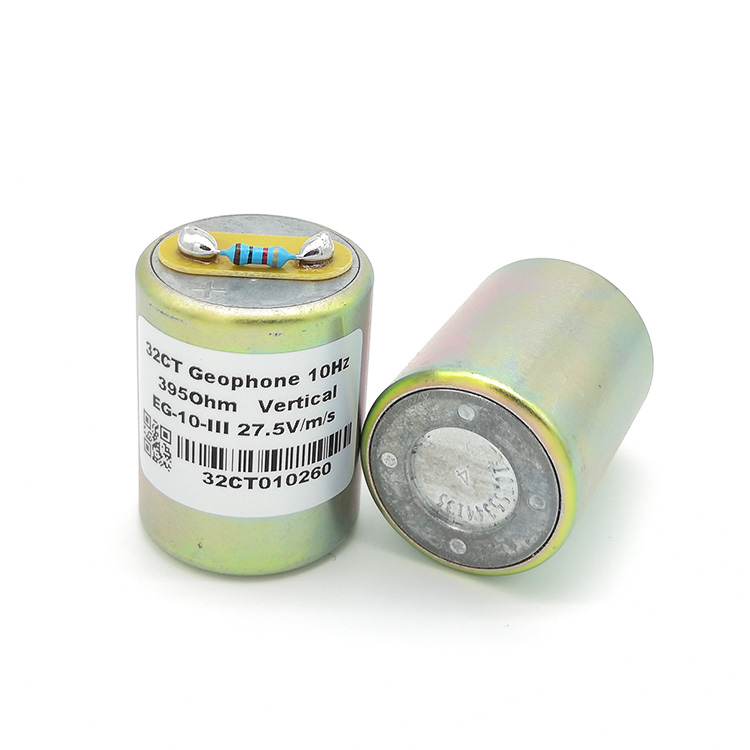A geophone is a ground motion transducer that has been used by geophysicists and seismologists to convert ground movement into voltage. Any deviation in this measured voltage from the base line is regarded as seismic response, which is used for analyzing the earth’s structure.
Resonance frequency is the key factor in a geophone, and it has to be low for the measurement of low-frequency signals. On the other hand, geophone must exhibit high bandwidth to measure high-frequency signals as well. However, most of the currently available geophones include mechanical springs that decrease the performance of the device. Geophone 0.75 Hz

Feeding back the output of geophone can vary the geophone’s sensitivity with respect to its frequency, and as a result low frequency signals are amplified. The resolution of geophone can be enhanced by controlling the position of proof mass.
A typical geophone consists of a mass suspended by means of mechanical springs. The geophone housing and the suspended mass start moving with the application of a velocity at frequencies lesser than the resonance frequency.
The mass will remain stationary for frequencies greater than the resonance frequency. The movement of mass is based on either magnets or coils. The response of a coil/magnet geophone is proportional to the ground velocity.
Geophones are used for several industrial applications for vibration isolation purposes and absolute velocity sensing to achieve a high level of accuracy and precision. Geophone technology is employed to measure absolute velocity for lithographic and high-level inspection applications to determine payload disturbances caused by moving parts and other external disturbances.
They are also used to position and control a complex lens system. Detection of leakage in oil and gas fields and earthquake prediction are also other major applications of geophones.
The geophones currently available in the market are highly sophisticated, and they operate based on the magnetic field generated by a coil suspended in a magnetic field. Current seismic industry market requires tight specifications to meet the standards of seismic survey.
The SM-24 Rotating Coil Geophone meets industrial standards and is designed by ION’s Sensor. It offers high performance in seismic exploration with bandwidth from 10 Hz up to 240 Hz and providing two-dimensional and three-dimensional high-fidelity data. It also facilitates unique element design and exceptional quality and low distortion with good specifications.
Do you have a review, update or anything you would like to add to this article?
In this interview, AZoSensors speaks to Dawn F. Massa Stancavish about how Massa has revolutionized the field of transducers in many industries - and keeps doing so.
Lawton Rushford and Bethany Silva
In this interview, AZoSensors speaks to Endress+Hauser about their Coriolis range of flowmeters and how they can assist in a variety of industries, including life sciences.
In this interview, AZoSensors talks to Scott Sidwell, Engineering Manager at Merit Sensor Systems, about MEMS piezoresistive pressure sensors, silicon dies, and how these are all utilized across a range of industries.
The Resonix™ RGD sensor from Sensata delivers accurate leak detection for HVAC systems leveraging A2L refrigerants.
The BinCloud Solar Gateway powers two 4-20 mA loop-powered sensors and transmits level measurement data to the BinCloud app.
The IonoTrode pH high purity water measurement sensor from Hamilton offers many unique features and can be adjusted and easily cleaned in the event of clogging.
AZoSensors.com - An AZoNetwork Site

Horizontal Geophone Sensor 2hz Owned and operated by AZoNetwork, © 2000-2024
